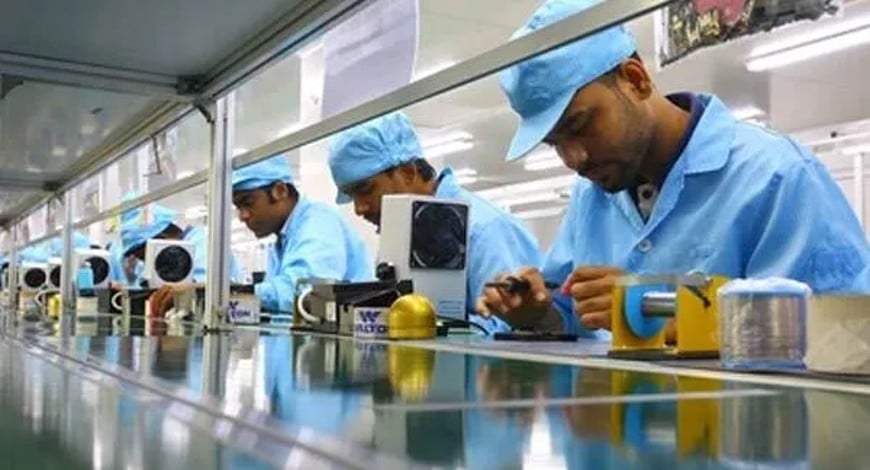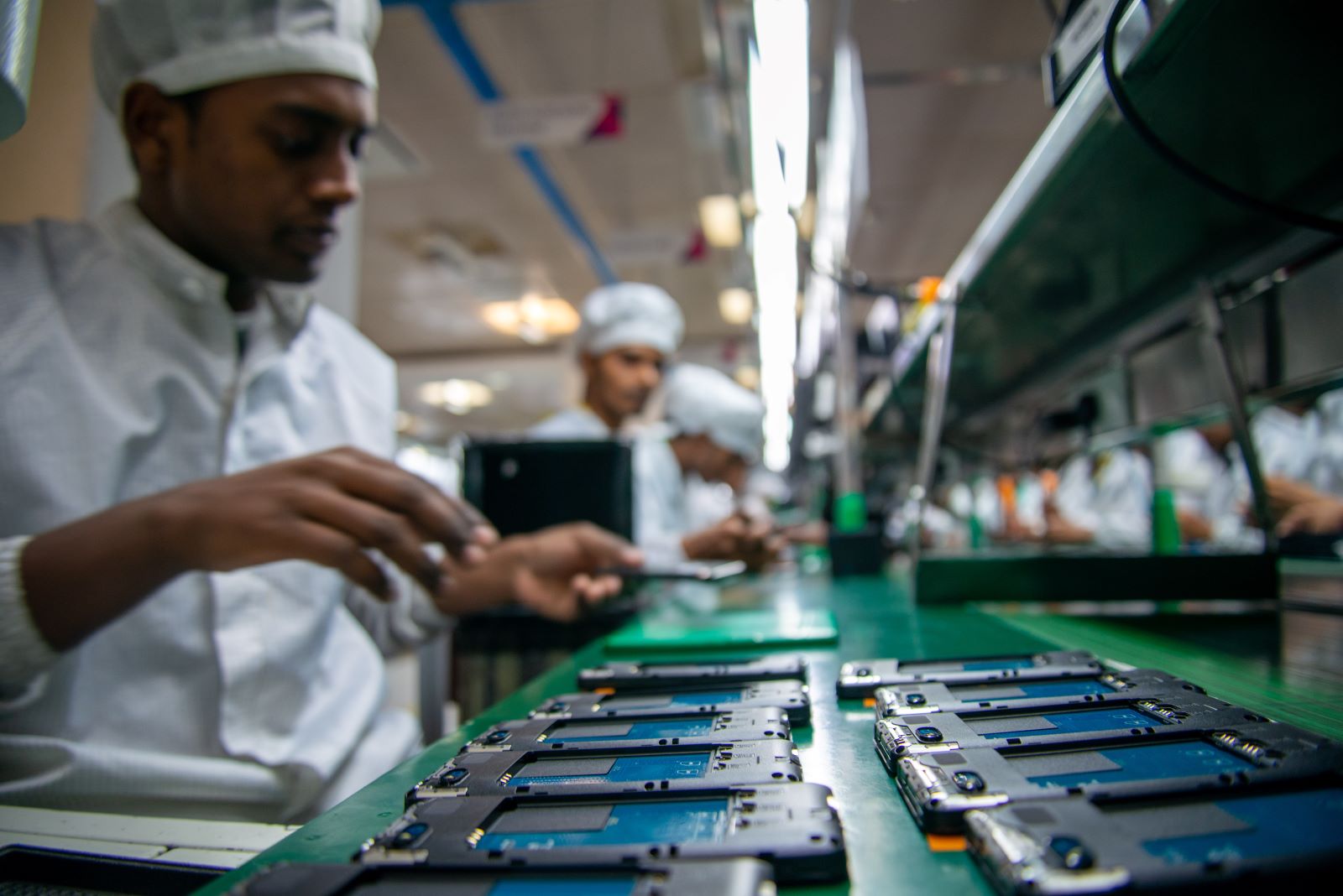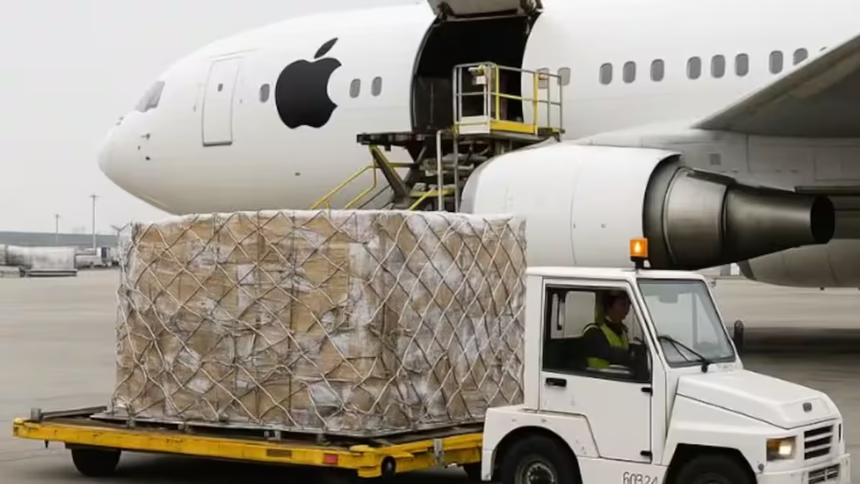Apple recently shipped 1.5 million iPhones from India to the U.S. after ramping up production efforts to sidestep tariffs imposed during Donald Trump’s presidency. The move highlights Apple’s approach to managing tariff challenges while ensuring a steady supply.
Analysts have warned that iPhone prices in the U.S. could rise sharply due to the company’s heavy dependence on imports from China, where the highest tariff rate stands at 125%.
India, however, faces a much lower tariff of 26%, which has been paused for 90 days under a temporary agreement excluding China. One insider mentioned that Apple was determined to avoid the U.S. tariffs.
To speed up the process, Apple pushed Indian airport authorities to reduce customs clearance time at Chennai airport from 30 hours to just six. This “green corridor” setup mirrors systems Apple uses in some Chinese airports.

Six cargo flights, each capable of carrying 100 tons, have transported the devices since March, with one flight departing as the new tariffs took effect. These shipments, totaling approximately 600 tons, equate to about 1.5 million iPhones, factoring in packaging weight.
Neither Apple nor India’s aviation ministry responded to requests for comment, with all sources choosing to remain anonymous given the sensitive nature of the discussions.
Apple sells over 220 million phones globally each year, and around 20% of U.S. imports are now sourced from India, according to Counterpoint Research. The rest are still manufactured in China, which faced a tariff increase from 54% to 125% under Trump.
At the 54% rate, the top-tier new iPhone 16 Pro Max, priced at $1,599, would have jumped to $2,300 in the U.S., based on estimates by Rosenblatt Securities.
To meet production goals, Apple increased shipments from India by adding workers and extending operations to Sundays at its largest Foxconn factory in Chennai. This factory, which produced 20 million smartphones last year, now includes the latest iPhone 15 and 16 models.
Two other sources confirmed that the plant began Sunday operations, a departure from its usual schedule.

Apples Shift iPhone to India
Apple’s shift toward India positions the country as a key player in its supply chain diversification strategy. Foxconn and Tata, its main suppliers, currently operate three factories there, with two more under construction.
Over eight months, Apple worked with Indian officials to establish the faster customs clearance system, receiving support from Prime Minister Modi’s administration.
Exports from Foxconn’s Indian facilities to the U.S. jumped significantly, reaching $770 million in January and $643 million in February, compared to $110–$331 million in the previous months.
Most of these shipments were delivered to major U.S. cities like Chicago, Los Angeles, New York, and San Francisco.
Apple’s iPhone production in India has grown rapidly since it began producing older models like the iPhone SE in 2017. Today, India manufactures newer models, including premium Pro versions.

In fiscal year 2024, India accounted for 14-15% of Apple’s global output, worth around $14 billion—double the previous year. Projections suggest India could handle 26-32% of global production by 2026-2027.
Foxconn’s Sriperumbudur plant in Tamil Nadu leads production, assembling about 67% of India’s iPhones. Pegatron and Tata also play major roles, with Tata recently taking a 60% stake in Pegatron’s Tamil Nadu factory.
Over 70% of iPhones produced in India are exported, and the U.S. is the largest market, with exports hitting $6 billion in fiscal year 2023-24. Total exports climbed to $12.8 billion in 2024, a 42% increase from the previous year, supported by initiatives like India’s Production Linked Incentive (PLI) scheme.
The shift to India is driven by geopolitical tensions, U.S.-China trade disputes, and disruptions such as COVID lockdowns in China. India offers lower labor costs, skilled workers, and government incentives, though challenges remain, such as reliance on Chinese components and infrastructure limitations.
Apple aims to expand local production, with plans to manufacture components and even introduce the iPhone 17 base model in India.
Despite this growth, China still dominates with 80-90% of iPhone assembly. India faces hurdles like delays in component shipments and restrictions on critical materials. Local value addition in India is currently at 15-20%, and increasing component manufacturing remains a long-term goal.

Geoff Thomas is an award winning journalist known for his sharp insights and no-nonsense reporting style. Over the years he has worked for Reuters and the Canadian Press covering everything from political scandals to human interest stories. He brings a clear and direct approach to his work.












